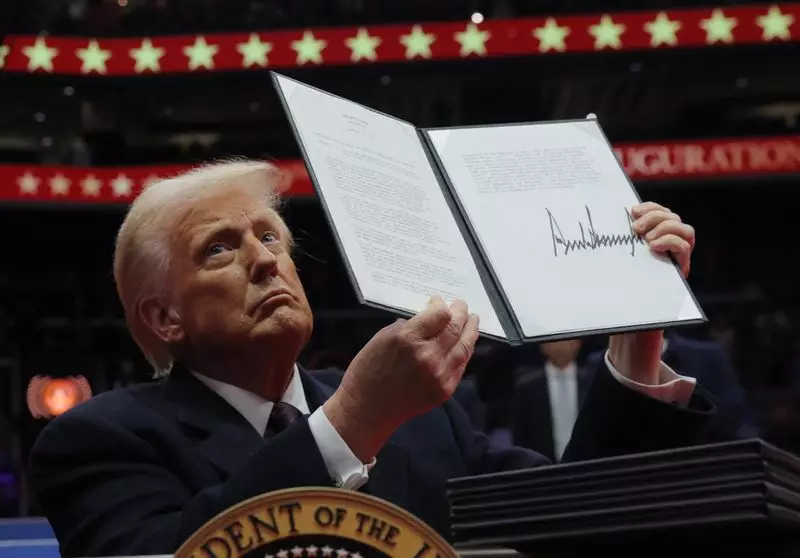In a high-profile event at Washington’s Capital One Arena, President Donald Trump announced an executive order compelling federal employees to return to the office full-time. This decision marks a significant turnaround from the shift towards remote work that gained traction during the early days of the COVID-19 pandemic. The directive, which requires white-collar government workers to abandon their telecommuting arrangements, is poised to reshape the landscape of federal employment. With remote work having provided a degree of flexibility and work-life balance, the new mandate raises questions about the motivations behind this abrupt reversal.
Critics of the order argue that it is more than just a push for returning to traditional workspaces. They suggest that this mandate could serve as a vehicle for an ideological overhaul of the civil service system. Reports indicate that some of Trump’s allies perceive the move as a strategy to facilitate the replacement of longstanding government employees with individuals who align more closely with Trump’s political beliefs. This has prompted concerns about job security for federal workers, who may feel pressured to navigate an unpredictable atmosphere where loyalty, rather than merit, becomes the guiding principle.
The executive order outlines a clear directive: heads of departments and agencies must terminate remote work arrangements and reinstate in-person attendance. While some exemptions may be allowed, the push for robust oversight and compliance establishes a clear intent—return to traditional office settings. Additionally, this order surfaces alongside a hiring freeze and the creation of an advisory entity named the Department of Government Efficiency. This new body is tasked with streamlining federal agencies, an initiative that could potentially dismantle certain governmental functions altogether.
The confluence of abandoning remote work, imposing a hiring freeze, and establishing the Department of Government Efficiency reflects a broader political agenda aimed at reshaping government operations. Experts suggest that the cumulative effect of these measures may drive disheartened employees out of public service and foster an environment conducive to diminishing institutional knowledge. Such shifts can have extensive ramifications on the capacity of federal agencies to serve the public effectively and maintain stability.
As stakeholders assess the impacts of this directive, the prevailing sentiment among experts is one of concern. The anticipated fallout may not only affect individual workers but could also hinder the overall efficacy of federal operations. Striking a balance between effective governance and a motivated workforce becomes paramount as these changes unfold. With the focus shifting towards enforcing adherence to an in-office model, the underlying morale of federal employees may plummet, potentially leading to a workforce that feels alienated and undervalued.
President Trump’s executive order to terminate remote work arrangements stands as a defining moment in the ongoing discourse about the future of work in government. As the administration pushes for a return to conventional office life, the implications on employee morale, job security, and government efficacy loom large. The full impact of this decree will continue to unfold, revealing how it fundamentally transforms the landscape of federal employment amid evolving public expectations.

